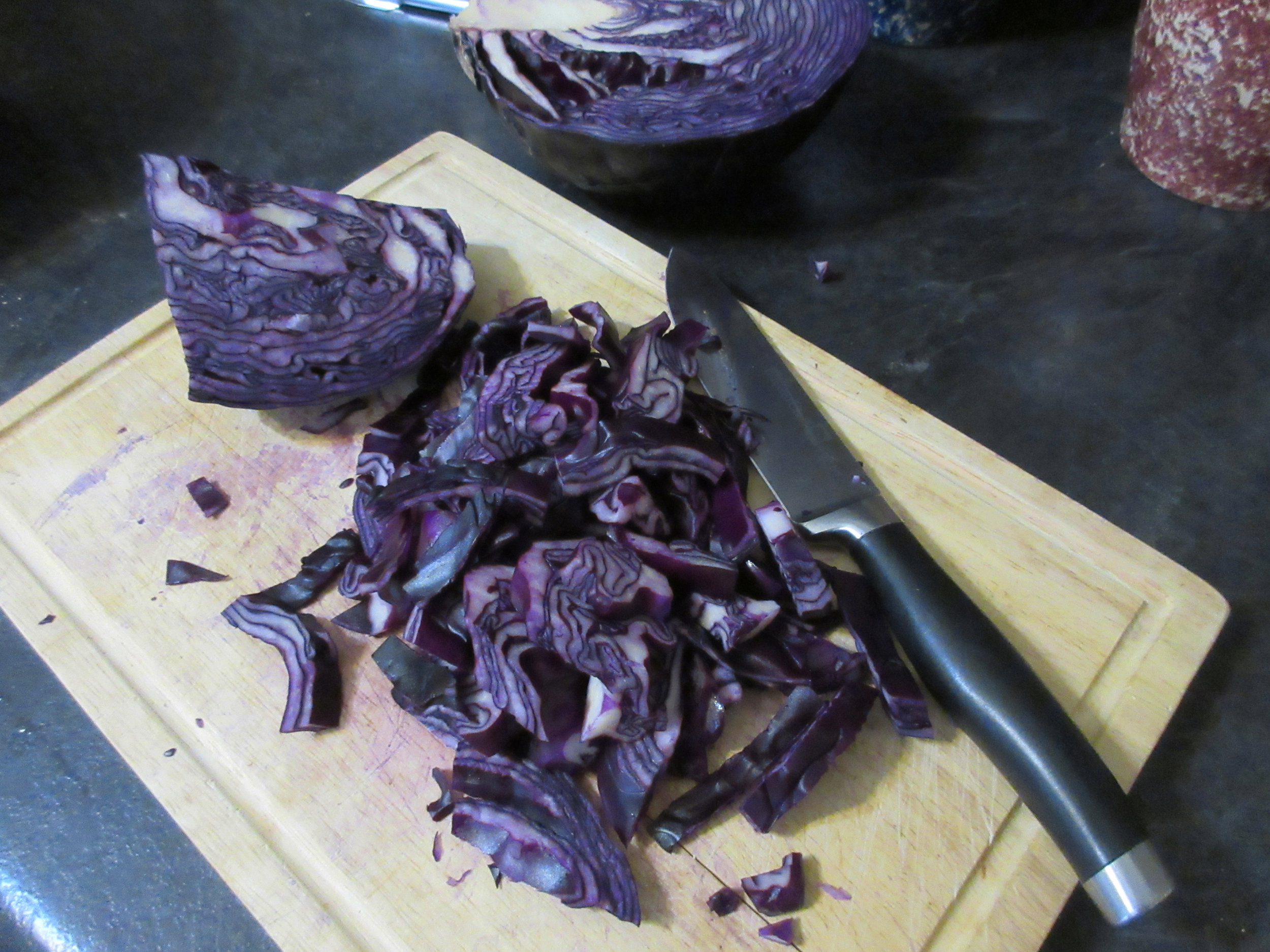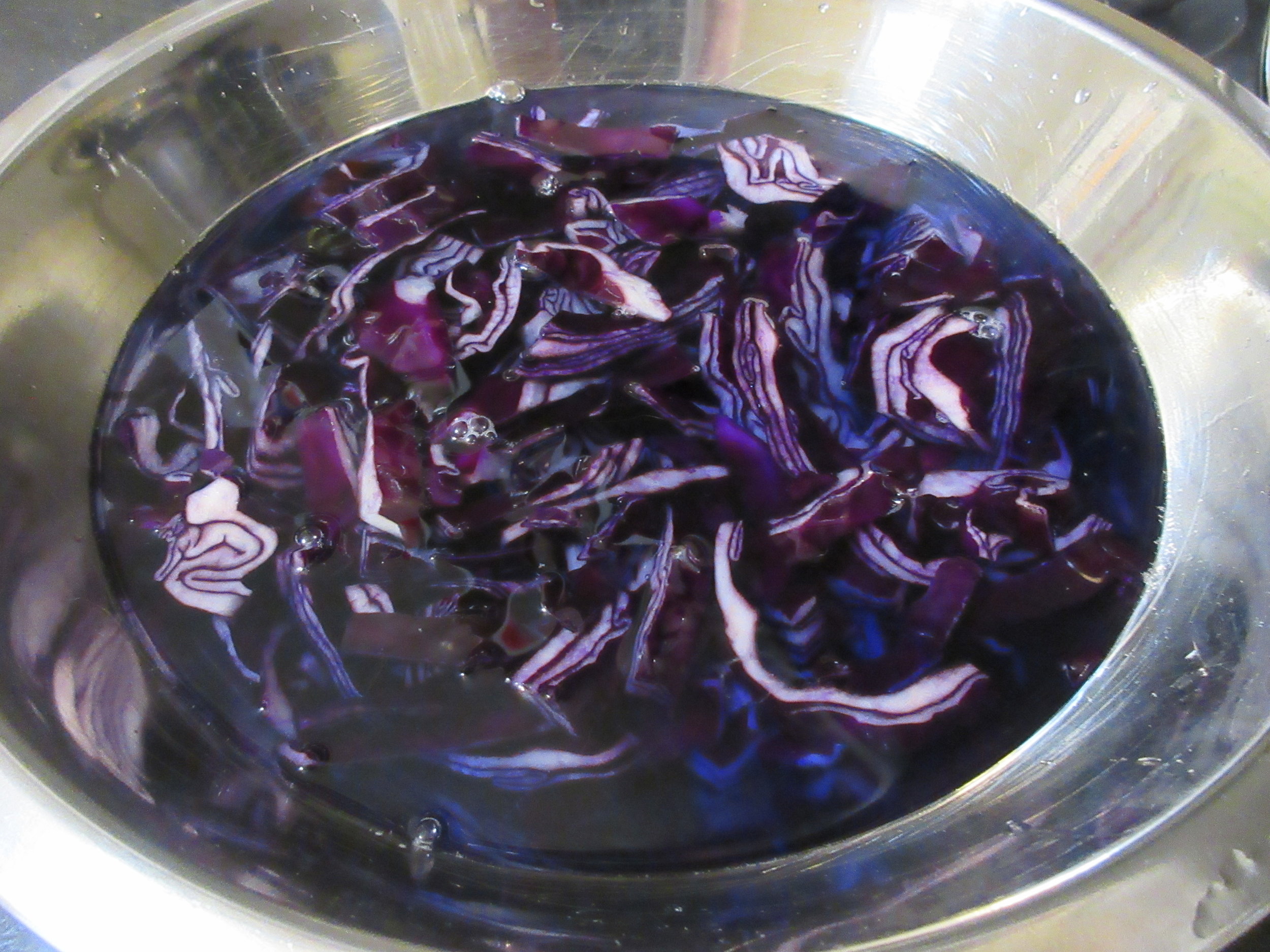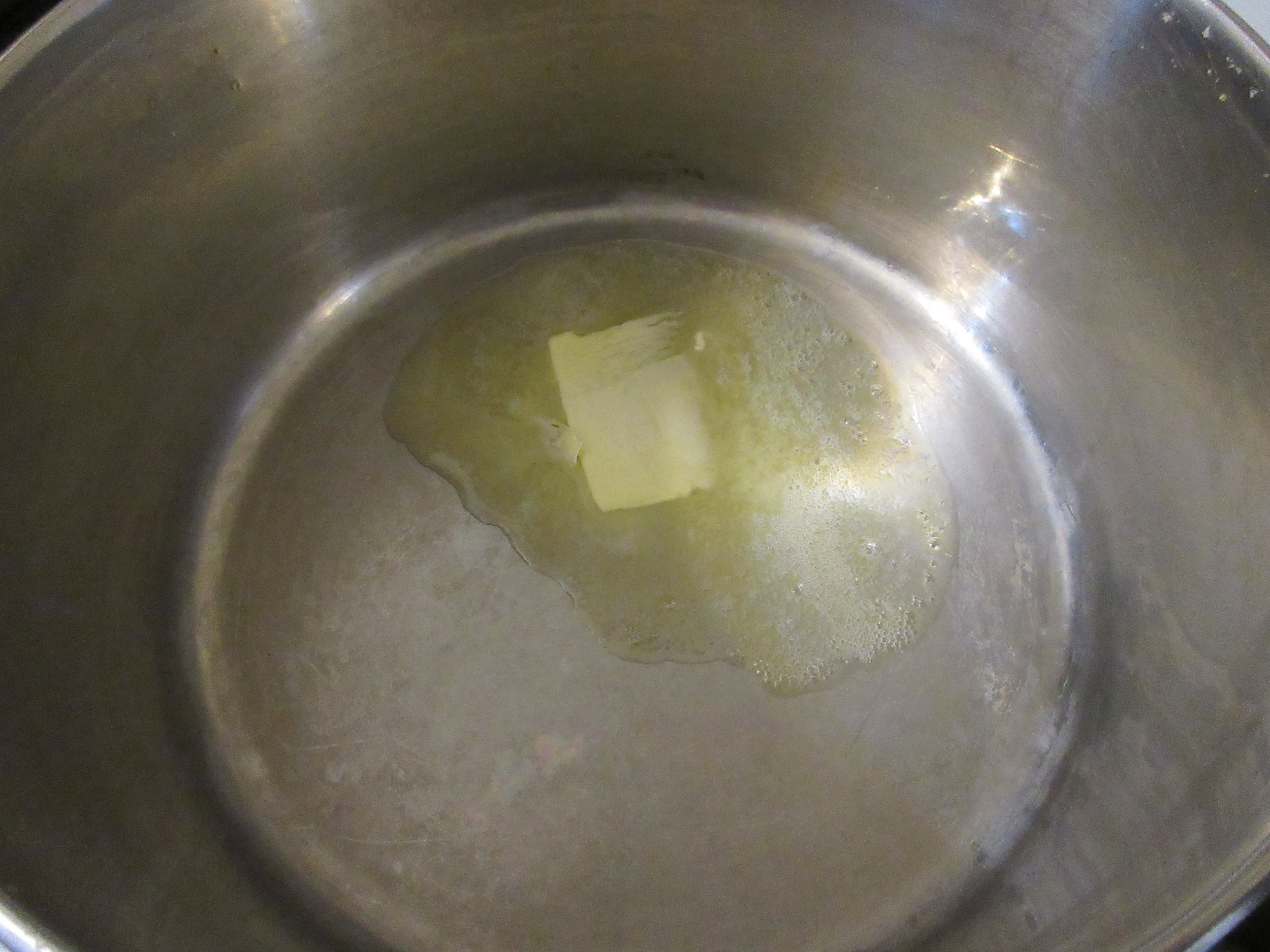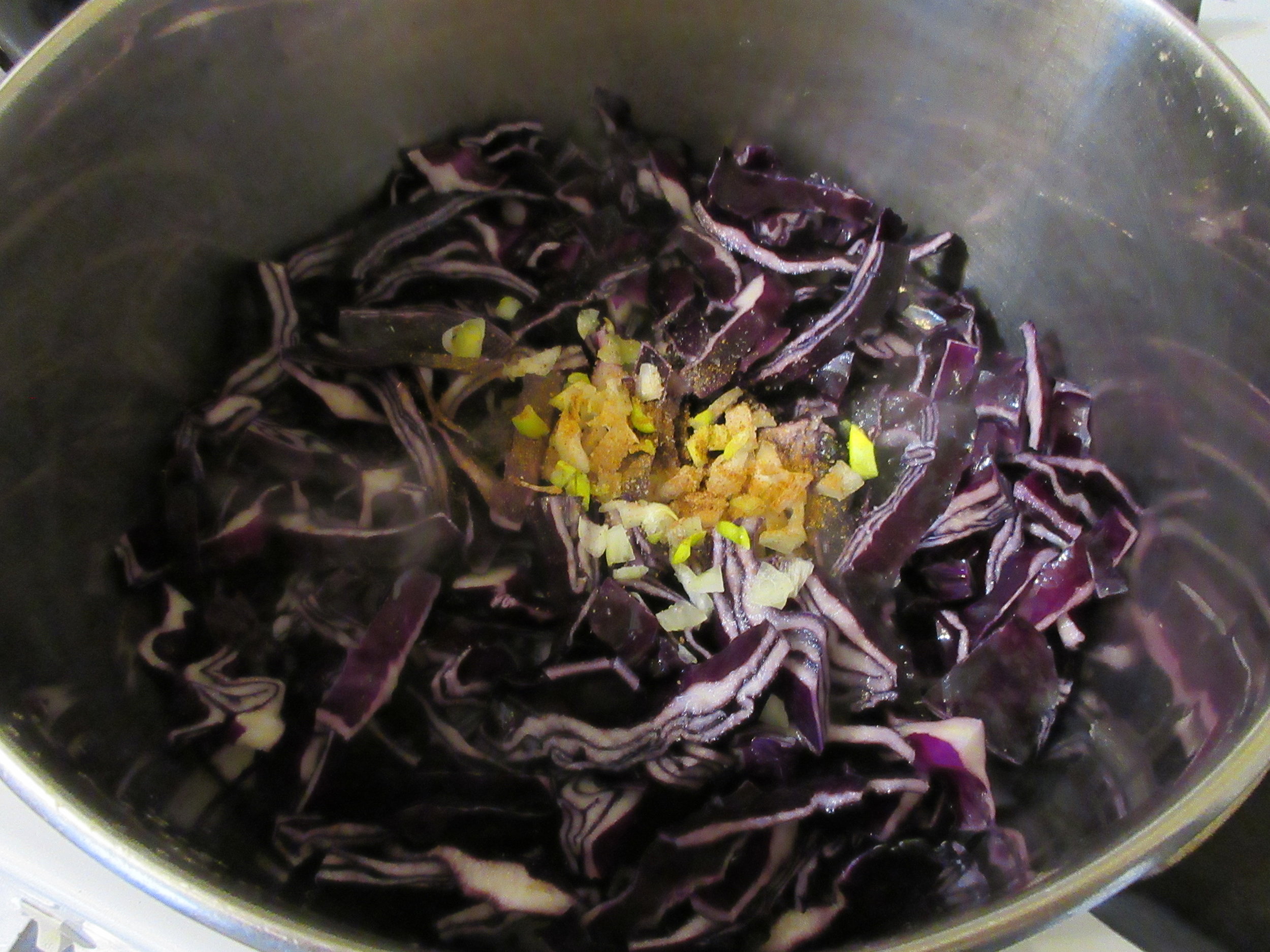German Cabbage
/You'll find this recipe in:
Boston Cooking-School Cook Book
By: Fannie Merritt Farmer
New York, 1896
The Original Recipe:
German Cabbage.
Slice red cabbage and soak in cold water. Put one quart in stewpan with 2 tablespoons butter, one-half teaspoon salt, one tablespoon finely chopped onion, few gratings of nutmeg, and few grains of cayenne; cover, and cook until cabbage is tender. Add two tablespoons vinegar and one-half tablespoon sugar, and cook five minutes.
My Recipe:
4 cups sliced red/purple cabbage - 500 g
2 tbsp butter
1/2 tsp salt
1 tablespoon finely chopped onion
A few shakes or a pinch of ground nutmeg
A few shakes or a pinch of ground cayenne pepper
2 tbsp vinegar – I used red wine vinegar
1/2 tbsp sugar (I used brown)
Slice the cabbage and soak in cold water. Fannie Farmer's recipe doesn't say how long to soak the cabbage, so I soaked it as long as it took me to chop the onion, have a few sips of wine and gather ingredients & supplies for the recipe. If you have thoughts about how long the cabbage should be soaked, please share in the comments!
Drain the cabbage and melt the butter in a large pot. Add the cabbage, salt, onion, nutmeg and cayenne pepper. Cover and simmer on low until the cabbage is tender, stirring occasionally. Add two tablespoons vinegar and one-half tablespoon sugar, and cook five minutes. Since the type of vinegar & sugar isn't specified, I decided to use red wine vinegar and brown sugar because I thought the flavours would go together nicely.
Before I began speaking to people about trying out Fannie Farmer's German Cabbage recipe from 1896, I never knew how many people had a passionate love affair with cabbage!
I really like how the flavours are balanced in the German Cabbage: some tang thanks to the vinegar, a bit of sweetness from the nutmeg & sugar, and a hint of spice from the cayenne pepper. And of course, if a dish is fried in butter, it's got to be delicious.
The Boston Cooking-School Cookbook (also popularly known as The Fannie Farmer Cookbook) was written in 1896 by Fannie Merritt Farmer, who was a student at the Boston Cooking School and became the Principal of the school not long after she graduated. In 1896, she approached a publisher with her cookbook idea. The publishers were not convinced, but conceded to print a limited run of 3000 copies if Miss Farmer covered the costs herself.
The Boston Cooking-School specialized in a more scientific approach to cooking & housekeeping, which is reflected in the recipes. Compared to other recipe books of the day, the measurements are rather exact, and the instructions are explained clearly. This cookbook has never been out of print since 1896, and these days you'll find the 13th edition of the Fannie Farmer Cookbook new in bookstores. If you'd like to read more about Fannie Farmer and her cookbook, have a look at these articles from Amazing Women in History and Smithsonian Magazine.
I found my copy at Cover to Cover, a second-hand bookstore in Collingwood, Ontario. When we were there a few years ago, Cover to Cover could have been called Floor to Ceiling because there was barely enough space to walk through the full shelves and piles of books. A woman appeared from around a corner, and I explained my specific cookbook interests. She said, "Yeah, we've got shit like that" and told me to search on a bottom shelf behind a pile of books. Sure enough, waiting there for me was a 1945 Joy of Cooking, and my reprint of the 1896 Boston Cooking-School Cookbook.
I knew it would be mine when I read on the cover that it was a fascimile of Fannie Farmer's first edition, but it had my heart when I opened it up and saw the inscription inside. Written in 1978 when the book was given as a gift from someone with an illegible signature (please comment if you can make out the name) to Glenda, who I'm guessing is the gift giver's sister. To me, this handwritten message conveys why The Fannie Farmer Cookbook has been in print for over 120 years:
dear Glenda – This book has been a never-failing reference to me since I first left Mom's home cooking and was challenged to produce meals on my own. With love, ???
Christmas 1978
Read the Cookbook
A scan of the 1896 first edition on the Internet Archive:









